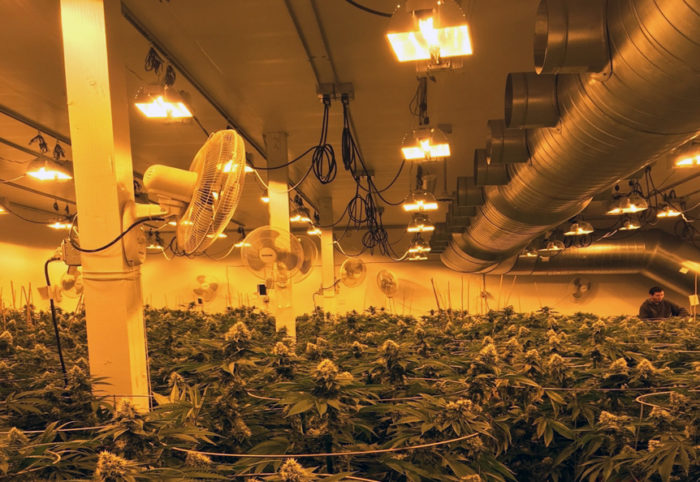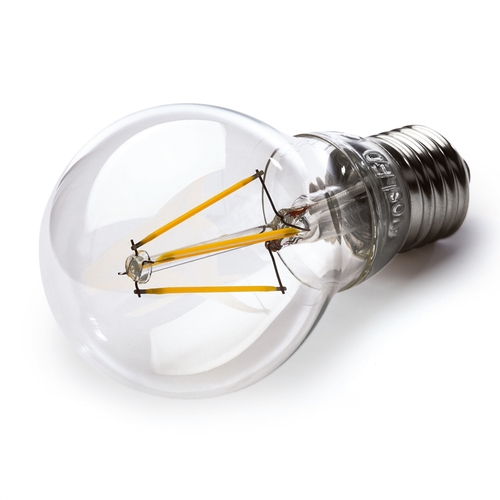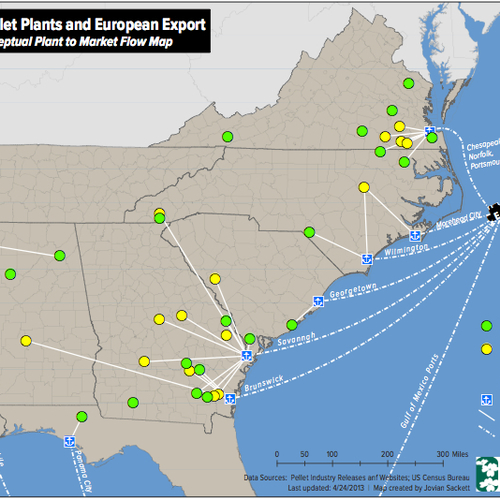
Image Credit: Image #1: John Morris
Many Americans live in areas of the country where the local utility sponsors energy efficiency programs — for example, one that offers homeowners free energy audits. In addition to offering this type of residential efficiency program, many utilities have also developed energy efficiency programs to help commercial customers, including retailers and manufacturers.
There is one fast-growing industry, however, that isn’t getting any help from energy efficiency programs: indoor marijuana farming. According to a few forward-thinking energy efficiency experts, ignoring this industry is a big mistake.
The industry has evolved rapidly in the six years since Evan Mills, a senior scientist at Lawrence Berkeley National Laboratory, wrote his ground-breaking paper, “The carbon footprint of indoor Cannabis production.” Back in 2012, Mills estimated, “In California, the top-producing state, indoor cultivation is responsible for about 3% of all electricity use.” That made some electric utility representatives sit up and take notice.
At this year’s NESEA conference in Boston, four experts — John Morris, Fred Davis, Sam Milton, and Anya Gordon — shared their views of the questions surrounding energy efficiency in the marijuana industry. Their presentation was titled “Crisis in Cannabis Cultivation: Latest Energy Developments in Data, Practice, and Policy.”
The quotes below give a flavor of the breadth of the discussion during the session.
Much, much brighter than an operating room
According to John Morris, a vice-president at D+R International, a large consulting company, “We need to measure and evaluate this industry. Not doing so is negligence. We need an energy efficiency champion to address this. … The industry is unique. It’s about growing plants indoors. The HVAC and dehumidification issues are huge. Code doesn’t help you.”
Morris continued, “The attitude of the utilities is, ‘Don’t ask,…
Weekly Newsletter
Get building science and energy efficiency advice, plus special offers, in your inbox.

This article is only available to GBA Prime Members
Sign up for a free trial and get instant access to this article as well as GBA’s complete library of premium articles and construction details.
Start Free TrialAlready a member? Log in













17 Comments
Great article
When I read your blog on the California Model the first thing that came to my mind was if requiring solar on all new homes would offset the increased energy usage from growing recreational marijuana.
Just how much of a difference does solar on 58,000 additional homes per year make in a state with 12 million homes? It would seem to me what is needed is utility size programs that are on a scale that actually have an impact instead of putting the burden on individual homeowners.
With their right hand they pass laws that will increase the cost of new homes under the idea that we must reduce energy consumption even at the expense of affordable housing. Then with their left hand they legalize recreational marijuana without any thought on the impact it will have on energy consumption likely undoing any reductions through tougher codes on homes.
Are these elected officials really all that concerned about actually reducing energy usage or are they just passing laws that win them votes and make them feel like they are doing something?
I have read articles that in part of Northern California drug growers use such a large percentage of the homes to grow marijuana that they drive up the cost of homes pricing homes out of the reach of those who need a place to live.
Why don't they pass laws that require the use of natural light for the production. Oh I forgot that would reduce the potency and we wouldn't want to do that.
Response to Dan Vandermolen
Dan,
Q. "Will requiring solar on all new homes offset the increased energy usage from growing recreational marijuana? ... It would seem to me what is needed is utility size programs that are on a scale that actually have an impact instead of putting the burden on individual homeowners."
A. Good question. Suffice it to say that the code mandate for new homes in California to include PV is only one small element of a concerted effort by the state government (and many concerned citizens, it should be added) to reduce CO2 emissions. This concerted effort includes a renewable energy portfolio requirement that incentivizes utilities to build utility-scale PV facilities and utility-scale wind turbine facilities. So we don't have to put the entire burden of CO2 reductions on the back of the new residential PV mandate.
Q. "With their left hand they legalize recreational marijuana without any thought on the impact it will have on energy consumption."
A. I agree that state governments need to do a better job addressing energy use by marijuana grow operations. Presentations like the one at NESEA (highlighted in this article) are part of the effort of energy-efficiency advocates to make that happen.
The ultimate solution to this problem will probably involve the legalization of outdoor marijuana cultivation. At this time, some regulators worry that children may be able to wander into a marijuana field and pick a few leaves and buds. It seems to me that state governments will eventually find a way to develop regulations to address this concern.
...then came the bitcoin miners... (sigh)
It used to be that aluminum smelting was the biggest gulper of the lowest priced electricity, but higher value products like bitcoin and marijuana may be giving them a run for their Twh:
https://digiconomist.net/bitcoin-energy-consumption
https://www.greentechmedia.com/articles/read/can-we-prevent-a-global-energy-crisis-from-bitcoin-mining#gs.hcpST9c
https://www.bloomberg.com/news/articles/2018-03-16/bitcoin-mining-banned-for-first-time-in-upstate-new-york-town
At 36 watts per square foot requiring that all indoor farms have 80-90% of the roof covered in solar panel would barely put a dent in the power consumption numbers. Bitcoin mines have even higher power density.
In WA outdoor marijuana cultivation is (for now) legal, but that isn't a perfect solution. Local communities like the economic activity & tax revenue, but those living in outdoor cultivation neighborhoods are pushing back,raising objections about the intense pungency of the crop:
https://www.thestranger.com/weed/2017/10/25/25490878/why-are-farming-counties-in-eastern-washington-shutting-down-pot-farms
Bitcoin and Weed
At least with aluminium there isn't much alternative to using power in the production. Bitcoin's use can only be seen as arbitrary, and with marijuana there is a perfectly viable alternative right outside the window.
Each December when I used to go out into the bush to get a Christmas tree, I'd find evidence of large outdoor grow-ops. You couldn't help stumbling on them, Vancouver island had literally tens of thousands. Now it's all indoor or in giant greenhouses which are situated on land designated as part of our Agricultural Reserve, intended to be preserved as farm land for growing food.
Our building code doesn't directly address weed production, but there are fairly stringent requirements for the facilities from both a safety and security viewpoint. That they don't address power consumption isn't unusual. Apart from residential buildings, there are no energy conservation standards for any industrial, commercial or institutional use structures. That probably should change, but it isn't unique to marijuana production.
Response to Dana Dorsett (Comment #3)
Dana,
As someone who cares about energy consumption (and the future of the planet), I found the articles on bitcoin mining that you linked to deeply depressing.
Aluminum power density
Don't be so unkind to aluminum producers. They been working very hard to reduce their carbon footprint. This is why so much aluminum is produced in Iceland and Canada - they're using hydropower for the electricity. Aluminum is also one of the most recycled materials on the planet.
Recently, Alcoa and Rio Tinto announced a new process that overcomes the chemical requirement for carbon anodes that produce CO2, using a different smelting process. https://www.treehugger.com/green-investments/push-apple-revolutionary-process-removes-co2-aluminum-smelting.html
So they're not headed for net zero energy any time soon, but they're aiming for net zero carbon, in the production process, anyhow.
If the aluminum producers can do it, you would think the pot producers could. Here's where regulation can help. LED lighting with spectrum-tuned lamps can reduce energy requirements by over 80%, both for lighting and for cooling all that power use. This should be a requirement for indoor production.
States can also make growing for personal use legal, like VT just did. People with any land at all will likely be happy to add a few plants to their herb garden, even if they aren't quite a potent as the bud grown under lights.
This is not an insurmountable problem, it's just a new and somewhat unexpected one. Great article, though.
Response to Peter Engle
Peter,
It remains to be seen how law enforcement officials will interpret the new Vermont law. According to Vermont state representative Selene Colburn, “The cultivation [of marijuana in Vermont] has to occur in [an] enclosed location that can only be accessed by the cultivator or by individuals 21 years or older that they’ve granted permission to access the site.” That probably precludes adding marijuana to your unfenced herb garden.
Response to Martin
I'm not moving to VT for another year or two, so hopefully they figure it all out by then. Groundhog fencing will keep out 2 year olds, but the teenagers are going to be a little bit tougher.
I think just about everybody in VT has a small patch of herb, so nothing's really going to change. I'm still surprised that they haven't gone full legal in VT, but their legislature is just as dysfunctional as the rest of them, or at least pretty close.
Unkind to aluminum producers? @ Peter Engle
It's not unkind to point out that it's a competitive business, and that electricity is one of their primary costs of doing business.
Smelting aluminum in Iceland may earn some greenwashing brownie points due to the fact that it's hydro, but it's primarily about access to a massive electricity supply at very low cost, just as it is with Canada. Decades ago when the BPA in the northwestern US had lots of surplus capacity to sell on the cheap smelters made their home there. When other places were developed with cheaper, more plentiful electricity supply the industry moved to where it was more economic, and rightly so.
Dams have been built in Iceland specifically to support this industry, not for keeping the lights on for the local population. (What population? Nobody lives there. Really- the population is less than a mid-sized US city, roughly half the population of Vermont.) The verditude of building those dams is suspect (to say the least), but compared to what? It's about massive, cheap, reliable electricity, and proximity to deep water ports for moving raw bauxite in, aluminum ingot out. Without both factors the industry would be located elsewhere, out of economic necessity.
Improvements in smelting process emissions matter too, but that too is at least as much about cost/efficiency of the process as it is about reducing carbon emissions. But carbon anodes would be the glaze on the frosting of the carbon cake, if the aluminum were smelted solely with coal fired generation.
As it happens, China's aluminum smelting production in 2017 was more than the rest of the world combined, and with some of the dirtiest grid mixes too. Norway is a distant second, but with much greener power, edging out Canada (also with much greener power), then India (dirty power). See: https://www.statista.com/statistics/264624/global-production-of-aluminum-by-country/
Aluminum production in Australia had been primarily a coal fired affair, but power outages related to power distribution problems a couple of years ago did extensive damage to some of the smelting equipment as the molten alumina solidified. Not sure what the status is today, but the mining & smelting industry in Australia has been driving large scale on-site renewables construction there to mitigate against transmission line powerplant failure outages. The steel industry there is too. UK industrialist Sanjeev Gupta is building out enough renewables to cover the power needs of a new steel plant in Victoria, with enough excess to export quite a bit to the grid. This too is as much about cost as anything, since solar power in Australia is far cheaper than the incumbent power sources. (But is saying so being unkind to the steel industry?)
https://reneweconomy.com.au/guptas-stunning-deal-to-supply-cheap-solar-to-south-australian-industry-54849/
But I'd argue that aluminum production is doing the world a LOT more good than cannabis & bitcoin production combined, even if it's a (sometimes carbonaceous) heavy electricity user.
@Dana
Points taken, though cannabis production may make a lot of people feel batter.
It is a good thing that market forces are making these heavy users go towards cheaper (and possibly greener) energy alternatives. Funny how the Aussies are using renewablepower because it's more reliable. All of this is pointing towards reducing or eliminating the use of fossil fuels.
BTW: Iceland's annual electricity production...
...is 12.9 Twh: https://nea.is/hydro/
Vermont (at roughly twice the population), 1.9 Twh: https://www.eia.gov/electricity/state/vermont/
If Iceland's per capita power use (all other uses) was comparable to that of Vermont they would only be producing about 1 Twh. So the dams are really ARE all about industrial power for the smelters.
Not all Aussies are invested in the future of renewables- there is a huge incumbent coal mining industry that isn't going away quietly. The current Australian government is even more screwed up than the current US administration on energy & electricity policy (sad, but true!), with more than their fair share of climate change deniers and some true believers in coal fired power, and some of the highest priced power in the developed world. But business & industrial folks have to look out for their bottom lines, and Aussie state governments don't all drink from the same punch bowl. New renewables are cheaper than staying hooked up to the grid there in some locations.
Gupta is a billionaire with investments in heavy industry worldwide- he's in it for the money, not some whack job ideologue, and is data-driven. The Australian Murdoch press is the cheerleader of the Chicken Little brigade currently making policy, blaming renewables stuff is responsible for everything from high prices to reliability problems with their grid even when the converse is demonstrable.
It's pretty easy to mock Australian government energy policy stupidity, which has become something of a sport. This bit o' satire showed up recently:
https://www.youtube.com/watch?time_continue=41&v=sitPeRlTdNs
That was depressing
I need to get high
In Maine, the energy efficiency programs won't get involved
Dan Kolbert lives in Portland, Maine. He just sent me a link to a relevant article titled Cannabis businesses shut out of Maine’s energy-efficiency programs.
In some states, the state legislature has legalized marijuana cultivation, but the federal government still deems marijuana cultivation illegal. Timid bureaucrats who run energy-efficiency programs don't want to get involved.
Energy Efficiency and Policy Recommendations
Harvesting Energy Savings in Indoor Agriculture Facilities
Quick Wins for Cultivators and Utilities
https://www.esource.com/tas-f-18/harvesting-energy-savings-indoor-agriculture-facilities
Energy Impacts of Cannabis Cultivation: Workshop Report and Staff Recommendations
(California Public Utilities Commission, Policy and Planning Division)
A Budding Opportunity: Energy Efficiency Best Practices for Cannabis Grow Operations https://www.swenergy.org/data/sites/1/media/documents/publications/documents/A%20Budding%20Opportunity%20%20Energy%20efficiency%20best%20practices%20for%20cannabis%20grow%20operations.pdf
Utility Agricultural Resource Efficiency Programs apply to cannabis grow facilities. Here are two California examples.
https://www.pge.com/en_US/business/save-energy-money/business-solutions-and-rebates/savings-by-industry/agriculture-and-food-processing/agriculture-and-food-processing.page
Response to Bill Burke
Bill,
My favorite fact from your first link: "Each marijuana plant consumes more energy than seven refrigerators."
Yeah, but... @ Martin
...putting in perspective, how many beer refrigerators does that one marijuana plant displace? :-)
With the kind of money going into this industry the problem will be solved, but it's an out-of-scale problem not anticipated by armchair observers like me. Yes I was aware that it use a lot of power, but if I were just making WAGs at it I would have been off by at least an order of magnitude.
Joseph W. Lstiburek on Marijuana Grows
This article was in the June 2018 edition of the ASHRAE Journal (subscribers only, but here is a link if you subscribe https://technologyportal.ashrae.org/Journal/ArticleDetail/1981):
This Bud's For You: Marijuana Grow Rooms & Commercial Grow Operations. Journal Article by ASHRAE, 2018. Joseph W. Lstiburek, Ph.D.
He describes some basic grow room construction and conditions, and in the end suggests that ASHRAE should write standards on indoor growing.
Log in or become a member to post a comment.
Sign up Log in